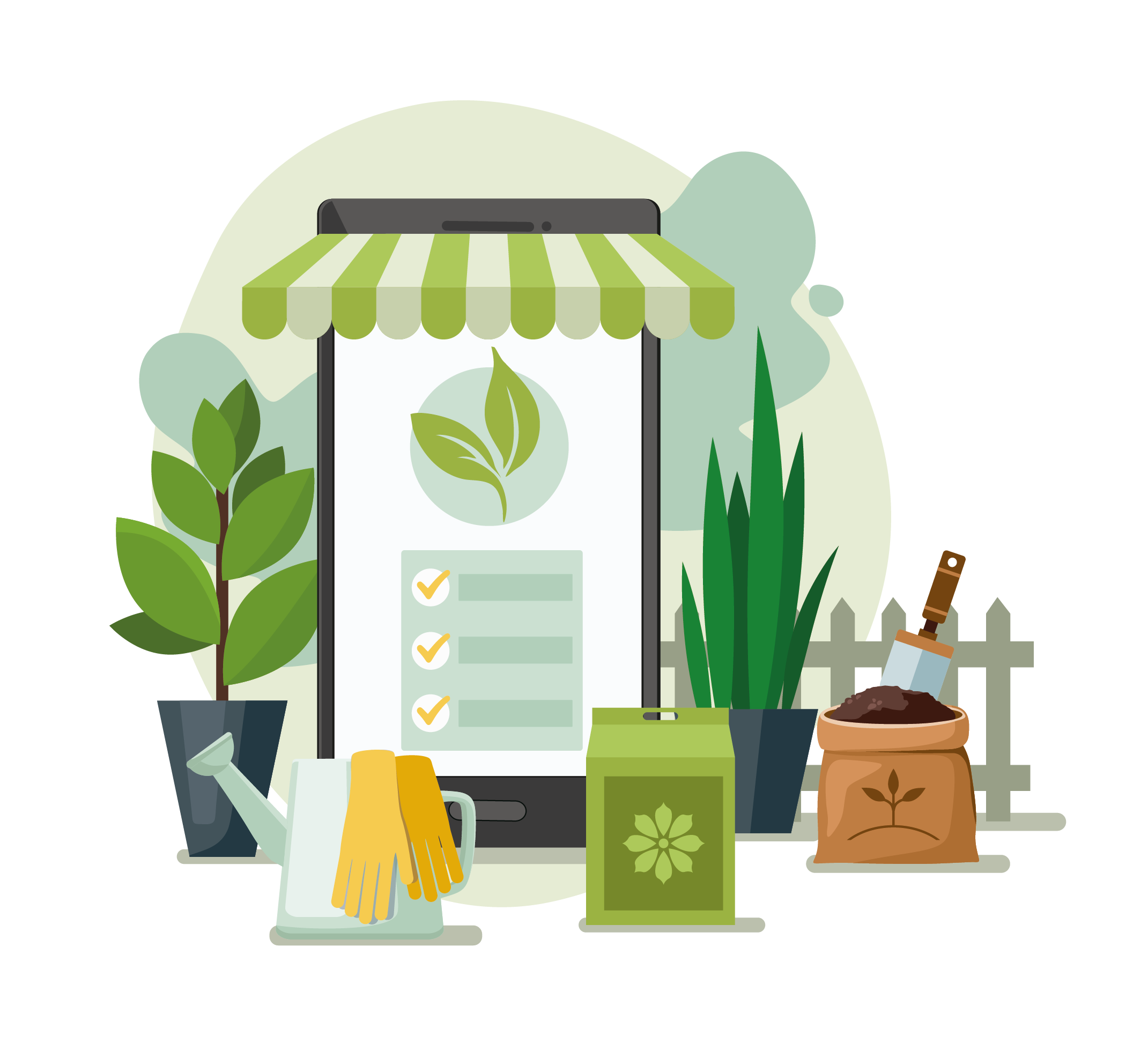Technology is in every industry – and newer technology keeps influencing them, including those that traditionally relied on manual labor and hands-on skills, including the landscape industry. Landscapers are now using technology to streamline operations, enhance project outcomes and maintain a competitive edge. It also allows you to exceed your clients’ expectations, which helps with returning customers and word-of-mouth advertising.
How Technology Streamlines Operations
Any business that is not efficient can fail, especially in competitive industries such as landscaping. Landscape companies can significantly benefit from using technology with:
Project Management Software
When you use project management software, you can more easily plan, execute and monitor landscape projects. Tools such as Trello, Asana and specialized software such as Landscape Management Network and SingleOps include features such as resource allocation, task scheduling, real-time collaboration and budget tracking.
The tools are excellent for ensuring each team member meets deadlines, is on the same page, and projects stay within budget.
Mobile Apps
You can manage operations on the go with mobile apps such as Groundwork and Jobber. Apps such as these allow those in the field to access project details, update progress and communicate with the office in real-time. Mobile apps can significantly reduce downtime, enhance communications, and ensure that you promptly address issues so your projects run smoothly.
Inventory Management
Keeping up with inventory is vital for landscaping businesses, especially those that have a wide range of equipment and materials. With advanced inventory management that uses barcodes and RFID technology, you can track inventory in real-time, automate reordering, and minimize waste. Using inventory management software also ensures you have everything in stock, thus minimizing project delays. Also, check out Momentum for tracking your vehicles, onsite tools, running time of tools, and time on each job!
Automation and Robots
Robotic lawnmowers, automated irrigation systems, and drones that survey and maintain projects are becoming more common. This type of technology can save time, reduce labor and improve precision in watering, fertilizing and mowing. Don't know where to start? Expert companies like AOS will design the system, install it for you, and coach you through running a robotic maintenance system. Software, like Deep Lawn, will measure lawns for you and also give your clients an Amazon-type purchasing experience!
Improving Project Outcomes
When you want to improve project outcomes to stay ahead of the competition and reduce the risk of costly changes, technology can help through the following methods:
Design and Visualization Tools
SketchUp, AutoCAD, Vectorworks, Pro Landscape and other modern landscape design software allow you to create realistic and detailed 3D models for your projects. These tools allow your clients to visualize a completed project before you begin work, ensuring their expectations are met. It also reduces the risk of having to make costly changes during the construction phase.
GIS and GPS Technology
Global Positioning Systems (GPS) and Geographic Information Systems (GIS) provide data for site analysis and planning. GIS software can analyze soil types, drainage patterns and topography, which helps landscapers make more informed decisions.
GPS software can help with the accurate placement of structures, irrigation systems and plants, ensuring that your design is implemented as intended.
Sustainable Practices
As with other industries, sustainability is a growing concern in landscaping. Smart irrigation systems and using native plants help create environmentally friendly landscapes. You can also leverage data analytics to monitor and reduce your carbon footprint.
Virtual and Augmented Reality
Augmented Reality (AR) and Virtual Reality (VR) can help you present and execute landscape projects. VR allows your clients to take an immersive virtual tour of their future landscapes so they better understand the design, while you can use AR to overlay design elements onto the real world to help with accurate placement and minimize errors.
Remaining Competitive in the Market
One of the most important factors for a landscaping company is to remain ahead of the curve in a highly competitive industry. Using technology can give you a competitive edge.
Data-Driven Decisions
Integrating data analytics into your landscaping operations allows you to make informed decisions. You can analyze data on client preferences, market trends, and project costs, thus helping you optimize your services and pricing strategies. You can also use predictive analytics to help anticipate future demand.
Customer Relationship Management (CRM) Systems
A customer relationship management system can help your landscape business manage your client interactions. These systems store customer information, automate follow-ups and manage your client interactions. CRMs such as HubSpot or Salesforce ensure your customer service is personalized and efficient.
Marketing and Social Media
You can use social media platforms, digital marketing campaigns and search engine optimization (SEO) to showcase your work, engage with potential clients and share testimonials. Google Analytics and other tools, such as Hootsuite, help you track the effectiveness of your marketing campaigns and allow you to make changes to increase the success of your marketing efforts. There are also many marketing agencies dedicated to our industry, such as Keldo Digital and Forge Marketing Group.
Training and Development
Webinars, online courses and workshops allow you to learn about and keep up with technological development continuously. Training and development ensures you and your staff remain adaptable and ahead of the curve.
E-Commerce and Online Services
Design services, virtual consultations, and e-commerce platforms for garden supplies and plants can increase your business reach when you offer them. Many customers prefer the convenience of browsing and purchasing products online. Additionally, virtual consultations save time and resources for you and your clients. Check out Plant Nerd for resources on plants!
Upgrade Your Landscaping Business with Technological Advancements to Stay Ahead of the Curve
New technology for the landscaping industry is always coming out. These advancements offer many benefits for streamlining your business, improving project outcomes and remaining competitive. When you add project management software, automation, mobile apps, design tools, sustainable practices, GIS, VR, AR, data analytics and more, you can transform your operation and be more successful.
Using technology is no longer an option – it’s necessary if you want to thrive in this competitive industry. Staying updated with the newest trends is the key to long-term success. When you leverage these advancements, you’ll have a better chance of exceeding your clients’ expectations and set yourself apart in the market.

Saving Solutions
Brooke Inzerella on Using Technology to Make Business More Efficient

HYGREENTOOL CORP Launches GOMOW
LOS ANGELES, CA (August 19, 2024)—HYGREENTOOL CORP (HYgreen) launches GOMOW, the leading robotic lawn mower using virtual boundary technology. The...


 SYNKD Writer
SYNKD Writer
